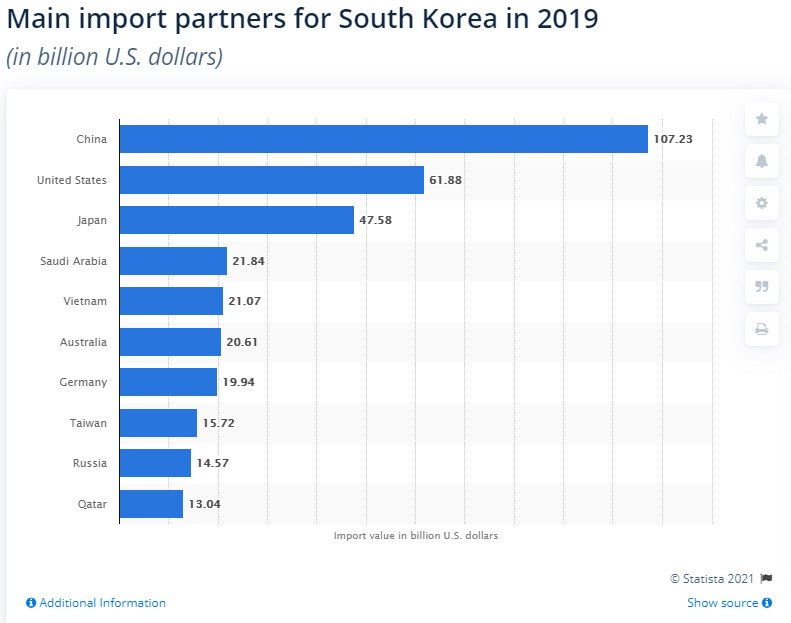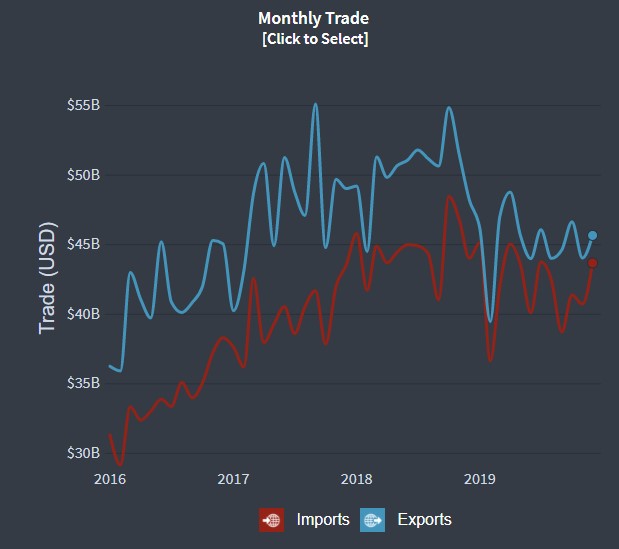Figure 10 Import partner

South Korea ranks as the ninth-largest import in the world trade (Michigan State University, 2021). In 2019, the primary import suppliers were China, which obtained 21.3% of total imports (Santander Bank, 2021). Other principal importers included the United States contributing 12.3% in total. Then Japan, Saudi Arabia, Vietnam, Australia, Germany, Russia, Qatar, and Kuwait represent less than 10% of overall imports. The main imports products relevant to 14% of petroleum oil, 7.1% of electrical equipment, 4.8% of gas, 3.4% of hydrocarbons, and the rest of coal, electrical apparatus, motor cars, iron ores, and automatic data processing machines.
Ultimately, with a total $110.97 billion import from China in 2019, China remains the largest trading partner with South Korea (Jianguo, 2020). The cooperation relationship with China has served to stabilize the country’s economic success, most important the recovery effectively of the interruptions of supply and industrial chains caused the pandemic. South Korea maintains the trade concession with China despite pressure from the US, which determined its “America First” regime to China’s containment.
Figure 11 Monthly Import and Export Trade between 2016 and 2019

In 2020, South Korea had exported $51.3 billion, in contrast to $44.6 billion imported during the year, it concluded a surplus of 6.72 billion trade balance (OEC World, 2020). Due to the coronavirus pandemic, according to the World Trade Organization, the import value rose to $50.3 billion and forecast to grow 4.6% by 2022(Santander Bank, 2021). Then, it remains less than 4 % annually for the next two years. As of January 1, 2020, 98.8% of products imported from the U.S are duty-free (International Trade Administration, 2021). South Korea implements a tariff quota policy designed to stabilize domestic markets. The country also applies a 10 percent flat Value Added Tax (VAT) on all import and domestic manufactured products, 10 to 20 percent special tax on certain luxury goods and durable consumer items.
Page Author: ChiWai Li




